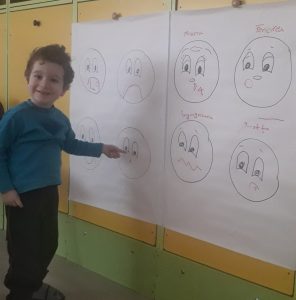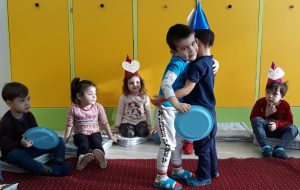Example from Bulgaria
The practice influences overall development of children, perception of their own emotions and those of others. Thus, children can react adequately in specific everyday situations. Once children have got used to sharing how they feel and why they feel that way, they will be able to discuss the reactions that occur. Then the teacher can have an impact on the overall behaviour, especially when there are some conflict situations. Due to the training, children will learn how to react and do it in a positive way. In addition, this practice can be very useful among children with the autistic spectrum or children with emotional-behavioural disorders, because their emotional world and their perception of feelings and emotions of the others can be easily destroyed.
Preparation: It is possible to be played like an individual game, or children can also be arranged in a circle.
Duration: 15 minutes
Example of a session
- Ask the children to frown such as: an angry man; autumn cloud or evil witch
- Ask the children to smile such as: a happy child, cunning fox, Pinocchio, someone who sees a miracle or the sun
- Ask the children to be angry such as: a person who was hit, two goats on a bridge (the fairy tale) or a child whose favourite item was taken away (a toy or an ice cream e.g.)
- Ask the children to be frightened such as: a rabbit that has seen a wolf or a child who got lost in the forest
- Ask the children to express fatigue such as: a person who has lifted something heavy or a father who comes home after work in the evening
During the session every single emotion and the reason why it is provoked can be discussed. Moreover, it is possible to ask the children whether it is good to be angry and how they should react instead of getting angry.
The aim is to make children learn how to:
- be able to reduce stress
- perceive their emotions and to capture them
- establish contact with the others by means of non-verbal communication
- use humour and game in order to cope with challenges and to overcome obstacles
- resolve conflicts positively.
Benefits
- Games like this are very helpful because they give each child the opportunity to immerse into the exercise, to do some kind of gymnastics and what is more to get rid of his/her worries and to get concentrated on the exercise game.
- The second benefit of this good practice is that children will learn more about the usage of non-verbal communication with the others and how to show empathy.
- The third benefit of this good practice is that it will make children learn how to resolve problems. It can be done by creating different exercises which are connected with a specific accident or case in the group. So, children can be asked how they will react and what it will be the right behaviour. Children should learn how to analyse different situations and if there is a conflict, they should be able to find its solution.
Challenges during implementation
The biggest challenge is the child’s desire to get involved into the game, to calm down and to play it. Another challenge is connected with the teacher because he or she has to be artistic and use humour and what is more to discuss the possible solutions with the child/children instead of judging him/them.


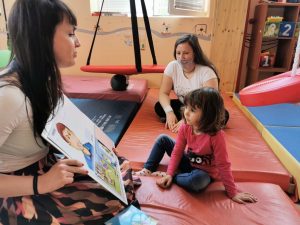
Example from Czech Republic
‘Good Start for All’ focuses on fostering cooperation between informal education settings, pre-schools and social services organizations to support the inclusion of children from socially disadvantaged or culturally different environments. It presents methods and strategies for educators of how to support the social and emotional development of children, aiming to implement them in all social settings by creating a network of the relevant entities. In the Czech Republic, the Good Start methodology worked well to boost the children’s self-esteem, lead them to autonomy, and help them develop relationships with other children.
GSA Good practices: Socio-emotional skills
- Teach children to self-manage their emotions, e.g. by taking 3 deep breaths or teaching them the difference between being tense and relaxed.
- Praising positive actions and ignoring the negative ones has proved to be an effective strategy for redirecting unwanted behaviour.
- Positive feedback and sticker rewards ensure that positive behaviour is repeated.
- Introducing innovative methods of teaching can help decrease cultural differences among children from various environments.
Benefits
- Children acquire the socio-emotional competencies necessary for the transition into further education and to succeed in challenges to come.
- Teachers acquire the methods and strategies of how to support the children in their socio-emotional development and boost their professional profile.
- The project creates effective learning settings across various institutions, cultures and countries.
About the training program
The teacher training program “Good Start: Support of Social and Emotional Development of Preschool Children” is a Czech adaptation of the Incredible Years program developed in the USA. The idea is to provide educators in pre-school institutions with the methodology to support disadvantaged children in their acquisition of social and emotional competences. The methodology includes amongst other things: building up positive relations between teachers, parents and children, individual attention and positive feedback for the children, feedback and involvement for the parents and general facilitation of communication. As a result, children should be equipped with a high self-confidence, emotion regulation strategies, problem solving skills and other attributes that pave the way for future education.
Furthermore, the program aims to connect all relevant social entities (pre-school, family etc.) to establish an overarching healthy development environment for the children. This network includes informal, as well as formal educational institutions to ensure a smooth transition from one to the other and to primary school, eventually.
Schola Empirica introduced the Good Start methodology in Czech pre-schools in 2011. Since then over 2000 teachers have been trained and methods are being implemented in over 250 pre-schools across the Czech Republic.
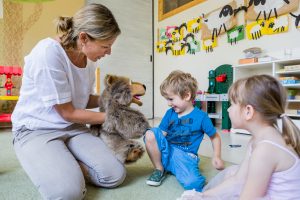
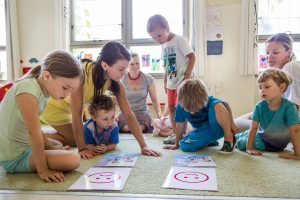

Example from Estonia
„Friends of numbers“ Problem solving, communication, resolution of conflict.
The goal of the practice is to develop communication skills in children, considering their age, skills and interests. Children get a problem that they have to resolve as a group. The children have to communicate, assign themselves roles and solve the problem. The task also teaches the children the connection between the number and the corresponding amount. Children learn the best if they do the same thing in different ways – observe, write, learn through their body.
Children are given the task to form groups of 4 by taking turns choosing their own team. After that children have to form number 4 with their bodies by collectively deciding how to do that, through negotiating and considering each-others thoughts. After that new groups were formed with new numbers.
It is a simple activity that does not need equipment and can be done indoors and/or outdoors.
Benefits
- Children communicated through the process with all members of the activity, therefore their communication skills improved
- Working themselves through the process they made the number they were assigned and used the right number of people to do that, therefore they learned numbers and the corresponding amounts
- Children divided tasks in the group, made agreements with each other, therefore developed independent and creative thinking, self-confidence and group-work skills

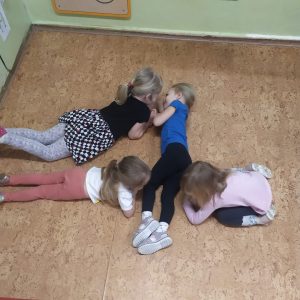
Example from Iceland
Wellbeing group time: Expressions, feelings, emotions and relaxation.
The aim and objectives of this good practice is feelings, emotions and relaxation; talk about expressions, feelings and emotions, look at pictures that show different ways of feelings and what makes us feel the way we feel. Also talk about that everyone has a right to their feelings and what we can do for ourselves and for others when we are not feeling well. The aim is also relaxation and teaching children ways to relax.
This group time can be held inside or outside. Teacher has pictures of different faces and facial expression. He also has the book Aladdin´s magic carpet.
Everyone sit in a circle and every wellbeing group time starts and ends the same way. The children take turn welcoming each other to the group. Than the teacher leads conversation about feelings and emotions. Every child gets to take part in the conversation. After that the teachers reads a story from Aladdin´s magic carpet and the children lie down and relax.
Benefits
- Respect. The children have respect for each other and both the children and teachers have respect for each other.
- Talking about feelings and emotions. Children get used to talking about their feeling and emotions and also listening to others. They find it normal to do so and are less likely to be afraid of expressing their feelings.
- Empathy. When children are used to having conversations with each other and listening to each other about their feelings they are not likely to go ahead and do something bad to the same children.
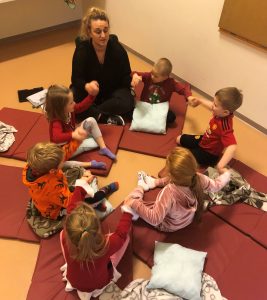
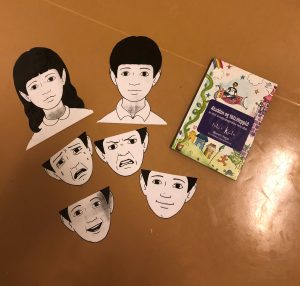
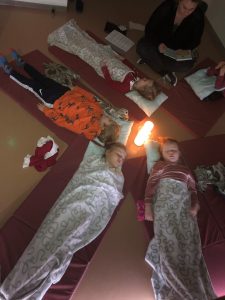
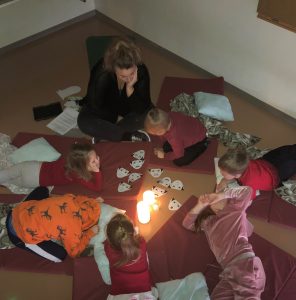
Example from Italy
‘Cosmic Social Education’ (CSE)
The Cosmic Social Education (CSE) derives from the in-depth analysis of scientists and pedagogists about the ever-changing social conditions that today’s world is facing: multiculturalism, globalization, conditions that require a high attention to inclusiveness, tolerance and respect for human rights. Hence the need to think of an education for peace to be carried out in a beneficial and stimulating context for the physical, the thought and therefore independence.
Already a century ago Maria Montessori (doctor and pedagogist famous all over the world for her evergreen method) had sensed the need to start from respect for the child to change humanity and go towards a perennial condition of peace. Maria Montessori and after her many pedagogists, philosophers and scientists begin to talk about cosmic vision: man is an integral part of the cosmos and is interconnected with all the environmental changes affecting th e earth.
The educational environment designed for the child’s growth needs, as a place for free choice of activity and expression of inner motivation, discovery of personal talents and development of creativity is the starting point for the implementation of the CSE. It also allows the construction of independence in doing which becomes independence in thinking (critical thinking).
This educational environment is therefore organized into mixed groups of age (0-3; 3-6 years) as it has also been ascertained following the discovery of Montessori that peer education is absolutely valid to guarantee a peaceful and natural growth for both related parties.
In order to have an educational environment that indirectly educates to peace and respect for oneself, for things and for others, it is important to stimulate, day after day, the importance of autonomous and reflective resolution of conflicts in children (Montessori peace table) and effective collaboration in everyday life (social role-playing games, circle time, Montessori set the table for lunch activity, etc.).
Obviously cosmic social education affects the whole educational society that revolves around the child.
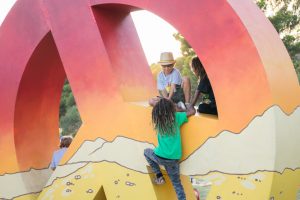
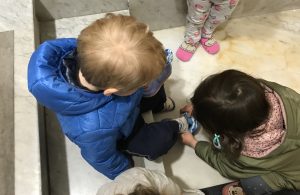
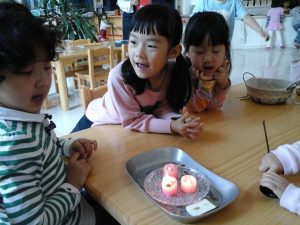
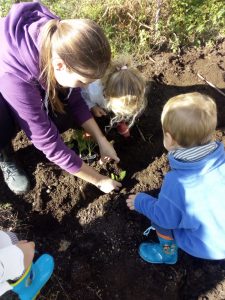
Example from Romania
”The story of the bear tricked by the fox”
Stories are activities of oral display of the content of certain literary texts with a realistic scientific or fantastic nature meant to solve the tasks of multilateral education achieved in the preschool education, and their predominantly descriptive and even explicative nature constitutes a valuable means of achieving the socio-emotional objectives.
The narrative is one of the most loved guided activities in kindergarten, a reason which stood at the basis of its choice as a method of good practice in this guide. Starting from this idea, education through explicative stories of pre-schoolers is possible and necessary. It is possible at this age, because the child proves great mental pliability, which gives us the possibility to intervene from an educational point of view in terms of training and information.
As examples of good practices, the story of” The bear tricked by the fox” leads to the achievement of certain objectives such as:
- The children’s acquaintance in the context of the emergence of emotions which facilitates the identification of the consequences of emotional feelings.
- The identification and awareness of the feelings lived, as well as behavioural reactions in situations with an emotional burden which leads to the acquisition of certain strategies of emotional adjustment.
- The improvement of the quality of the educational action as well as intra-social and inter-social relationships in the kindergarten environment.
Benefits
- Communication development – Development of the capacity to interact with the other children.
- Assimilation of basic emotional skills (Recognizing emotions, expressing emotions, understanding emotions and adjustment/self-adjustment of emotions).
- Development of courage, of confidence in one’s own forces, overcoming fear, controlling feelings.
How does it help us?
- Allows children to become familiar with the context of emotions, which makes it easier to identify the consequences of emotional feelings.
- Helps to identify and become aware of lived emotions, as well as behavioural reactions in emotionally charged situations, facilitates the acquisition of emotional regulation strategies.
How do we proceed?
- We read them the story. We organize the images in the order of their appearance in the story. Every trace of the bear has an expression/ emotion.
- We identify when the bear felt so Happy (basically the pre-schooler put himself in the bear’s shoes).
As a good practice for the socio-emotional development of pre-schoolers, the story/stories contribute in a positive manner to daily educational activities!
Step 1. Identify the bear’s emotion
- The story is identified based on the images presented.
- The description of the images will be made in the chronological order of the events.
- After the reconstruction of the story line, each child shall come and describe the emotions felt by the characters in each scene in the photo:
- AMAZED: When he saw the fox with the fish!
- HAPPY: When the fox told him how he could catch a lot of fish!
- ANGRY: When he realized that the fox tricked him!
- SAD: He was left without tail…and hungry!
Step 2. Observation and representation of emotions (Recognition, identification and naming of emotions)
- After identifying, recognizing and naming emotions, children can play with images that express emotions in various small attention games. Through them, they will develop their emotional and social skills and competencies!
- The children are encouraged to share their emotion!
- The use of this good practice allows children to get acquainted with emotions. This helps in the identification and awareness of the feelings lived, as well as behavioural reactions in situations with an emotional burden, it facilitates the acquisition of certain strategies of emotional adjustment.
- At the same time, stories allow educators in the preschool education to adapt the content of any story to the emotional needs of the children.
Knowing the beneficial effects of reading in one form or another (the teacher’s story, reading based on images, story listening, etc.) from a young age, educators must be encouraged to capitalize this method daily.
Our idea for the story of “The bear tricked by the fox” not only encourages the teaching staff to combine the useful with the pleasant, but also offers the possibility to parents and specialists to enter into the magical world of childhood, bringing novel benefits in the development of children’s personality.
